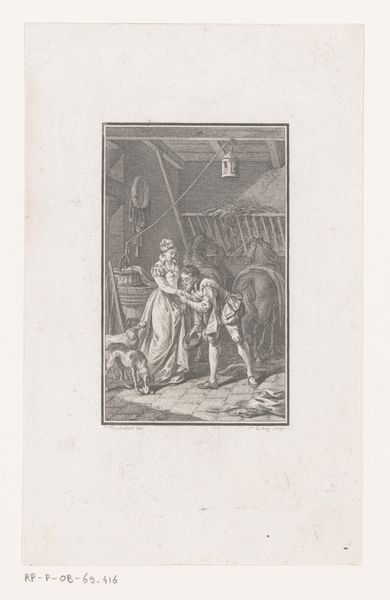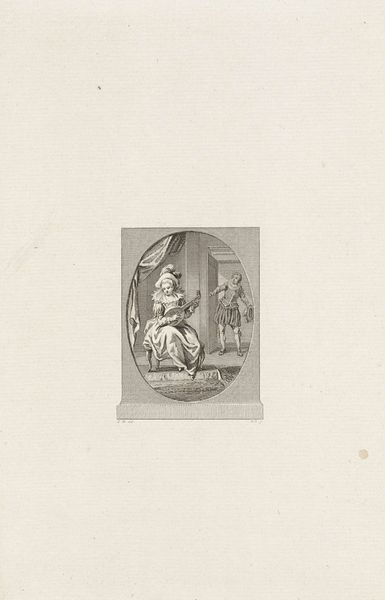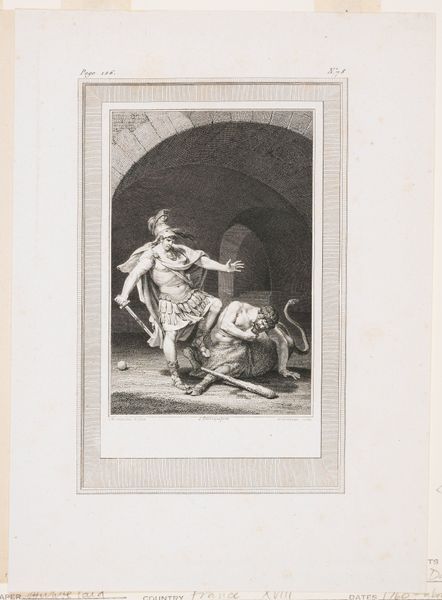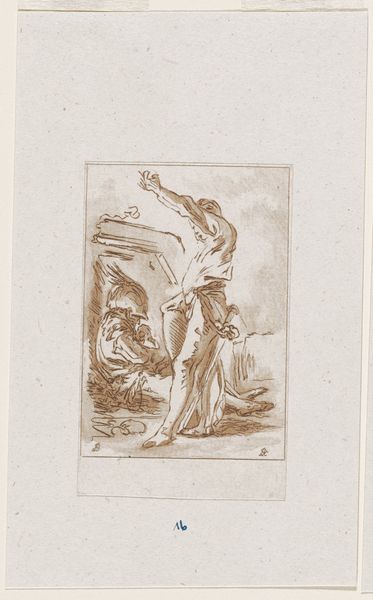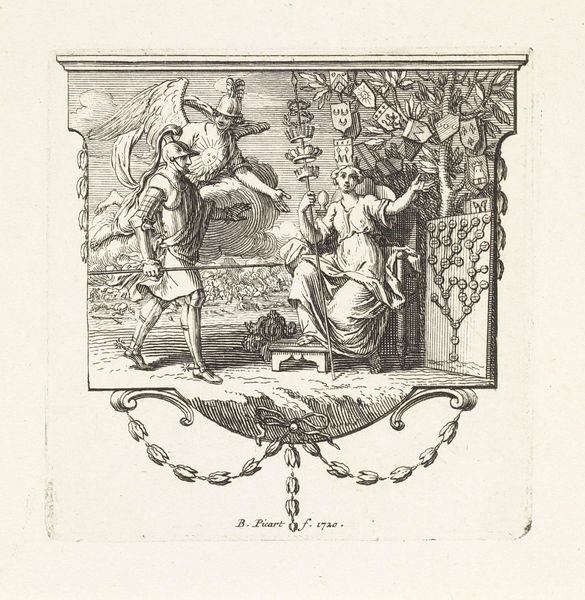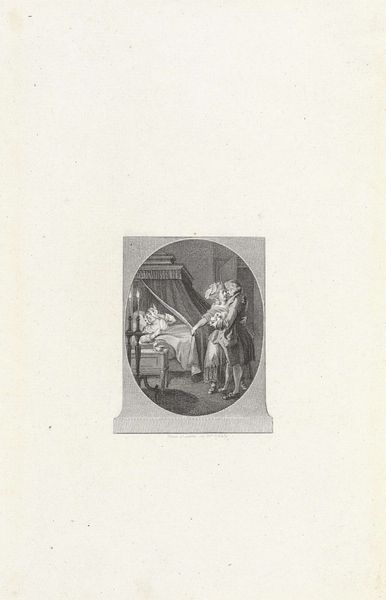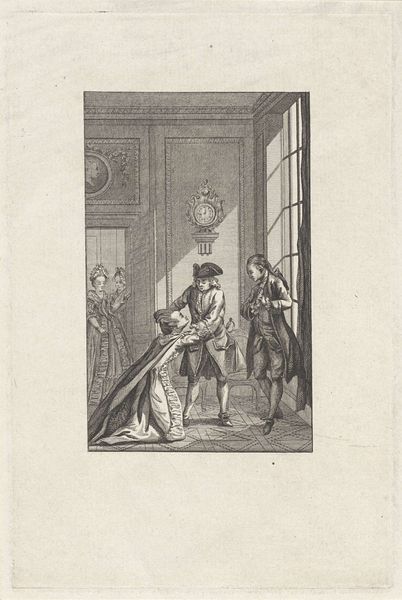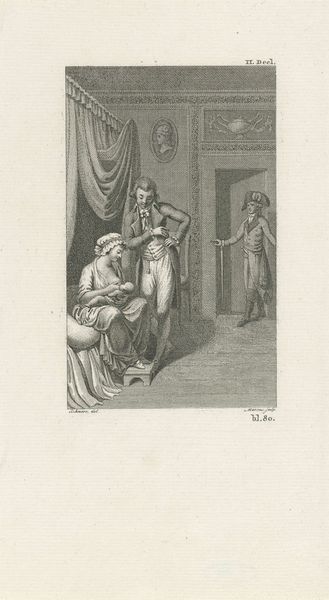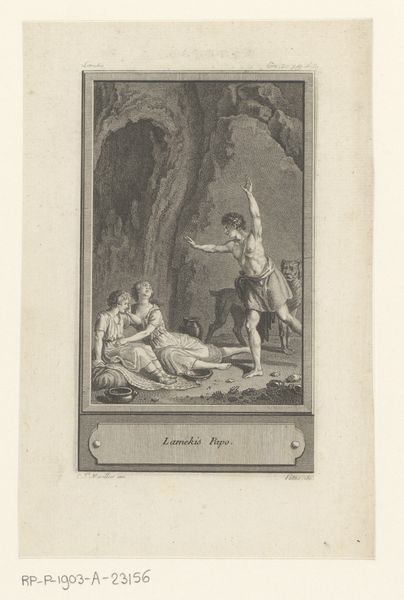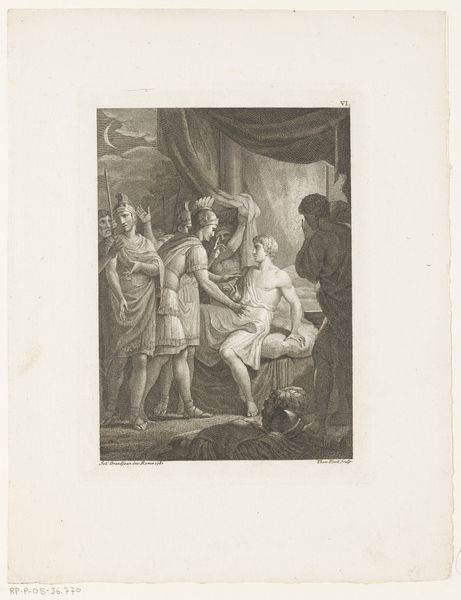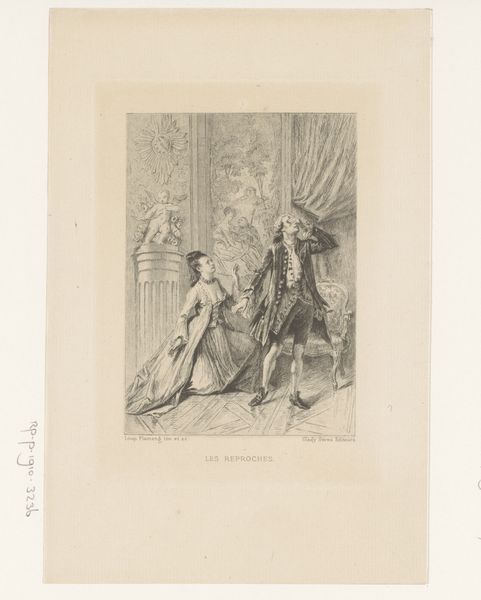
Dimensions: height 154 mm, width 122 mm
Copyright: Rijks Museum: Open Domain
Curator: Here we have Jacob Folkema’s “Geschrokken man in een slaapkamer,” or "Frightened Man in a Bedroom," created in 1761. It's an engraving, so think of the meticulous process, the pressure of the burin on the copperplate. The sheer labor involved! Editor: It feels quite theatrical, doesn't it? Like a freeze-frame from a morality play. The exaggerated gesture, the shadowy interior... there’s a sense of internal drama externalized. I’m immediately drawn to what anxieties and expectations this scene touches on. Curator: Consider the context: the printmaking industry in the 18th century. Folkema wasn’t just an artist, but an artisan, a skilled producer operating within a network of workshops and distribution. Prints like this circulated widely, influencing public taste and understanding of subjects and moral panics, for that matter. The material reality of the print – the paper, the ink, the press – all speak to the accessibility of imagery in that era. Editor: Absolutely. And that accessibility speaks to power. Who gets to create these images, who consumes them, and what ideologies are embedded within them? The frightened man—likely bourgeois, judging by his attire and bedroom accoutrements—embodies a specific kind of societal fear, a domestic unease. Curator: What intrigues me is Folkema's mastery of line, turning what is essentially an industrial mode of reproduction into art. The tools, the skills... we sometimes forget the material base that supports even the most high-minded artistic visions. The line-work itself is meticulous. Editor: Exactly, the tools matter, and so does the emotional resonance. He's fleeing some "fantome" perhaps a moral reckoning. Considering this was the Age of Enlightenment, the tension between reason and irrational fear is quite telling. This "frightened man" perhaps embodies society grappling with it’s shadow-self? The inscription says "Where do you want to flee? The phantom is in your heart". What societal 'phantom' are we truly speaking of here, Folkema dares to asks us. Curator: A compelling observation! The material speaks directly to this moment, through careful selection of medium, the artist is revealing that anxieties surrounding status can come for even the richest of us. Editor: Indeed. It underscores the power of art, and print making more specifically, to act as both mirror and goad, prompting necessary dialogue even today. Curator: Indeed. A confluence of the personal, political, and the productive. It truly shows us how a society produces its own morality.
Comments
No comments
Be the first to comment and join the conversation on the ultimate creative platform.
